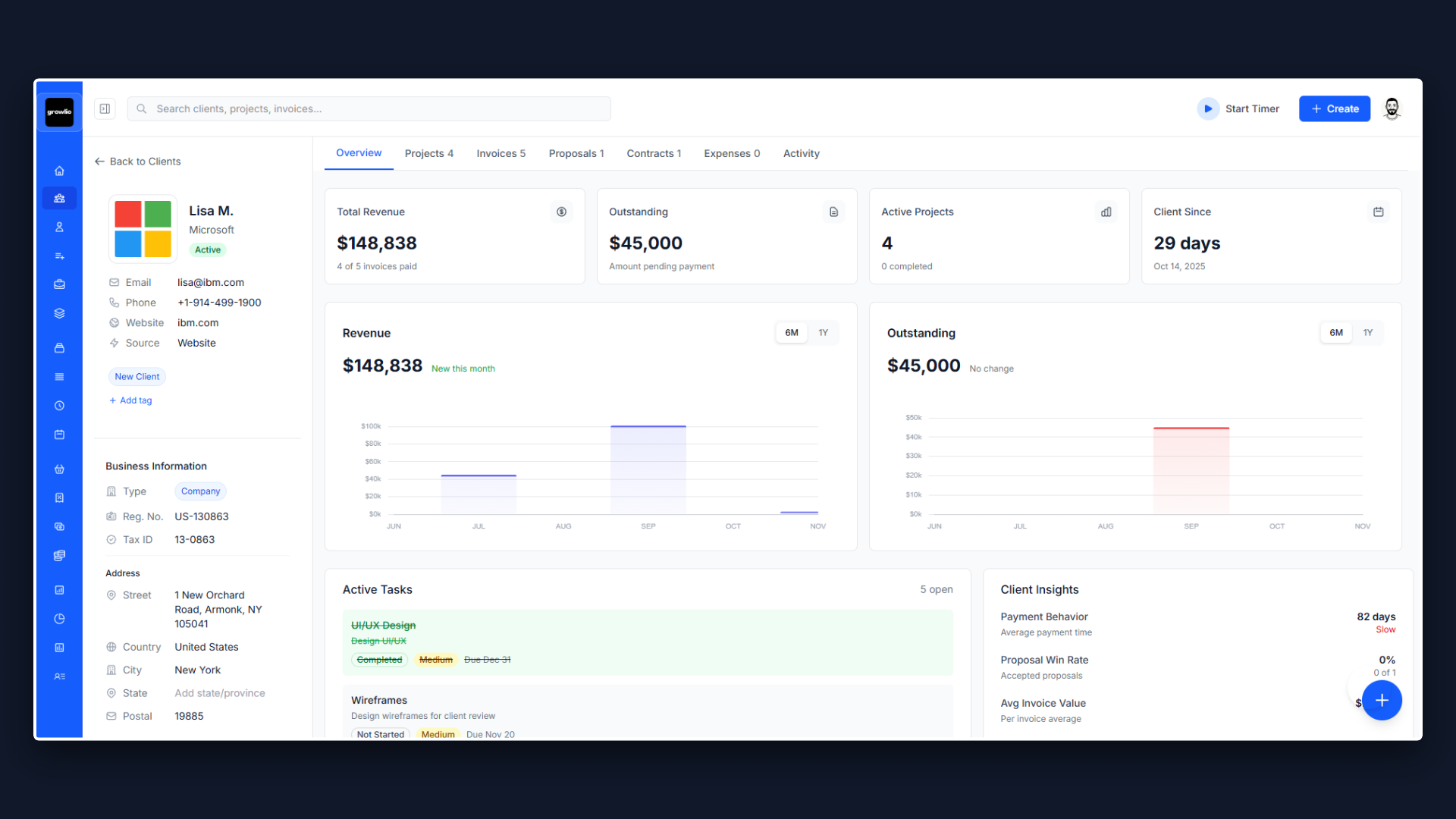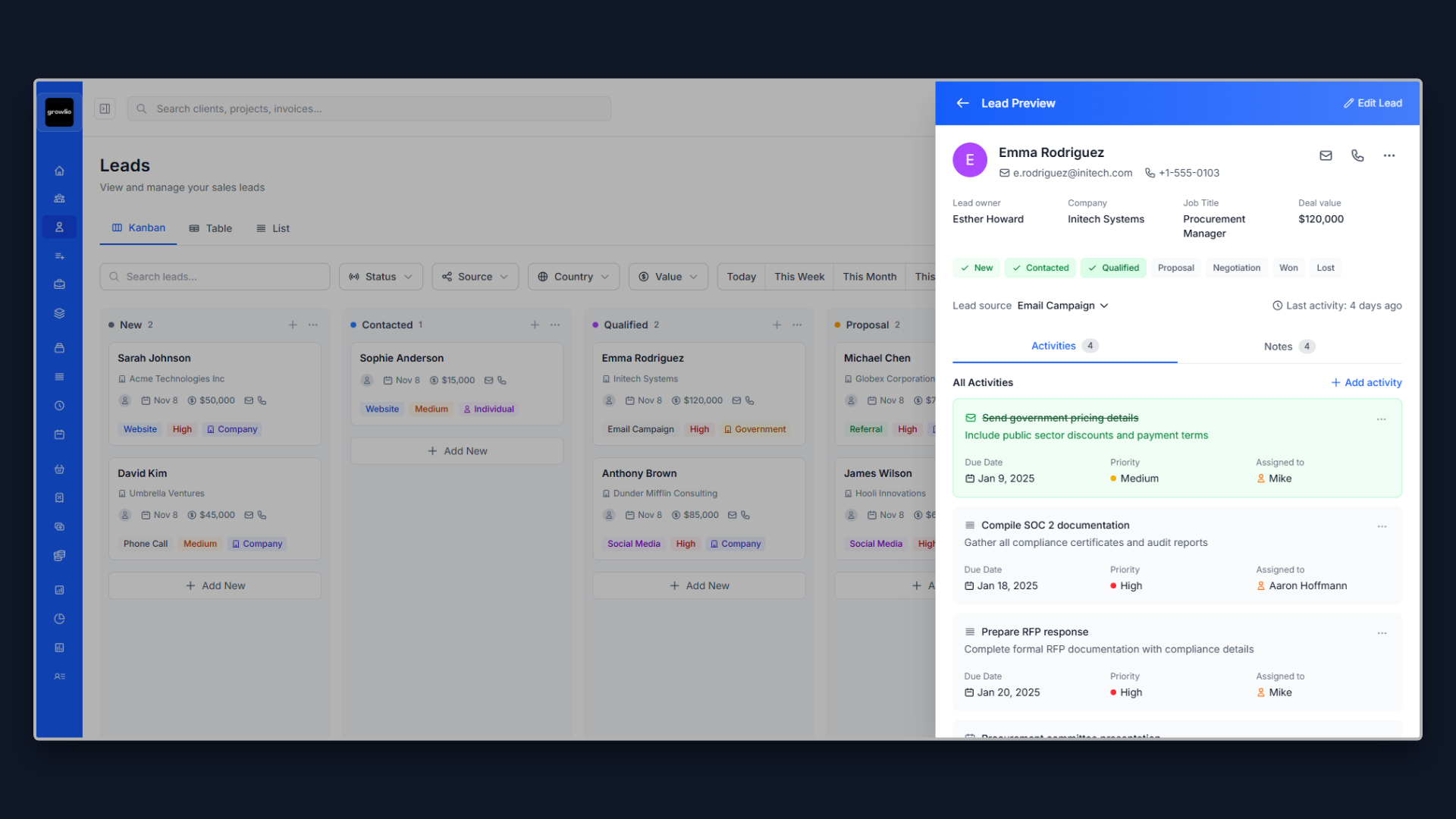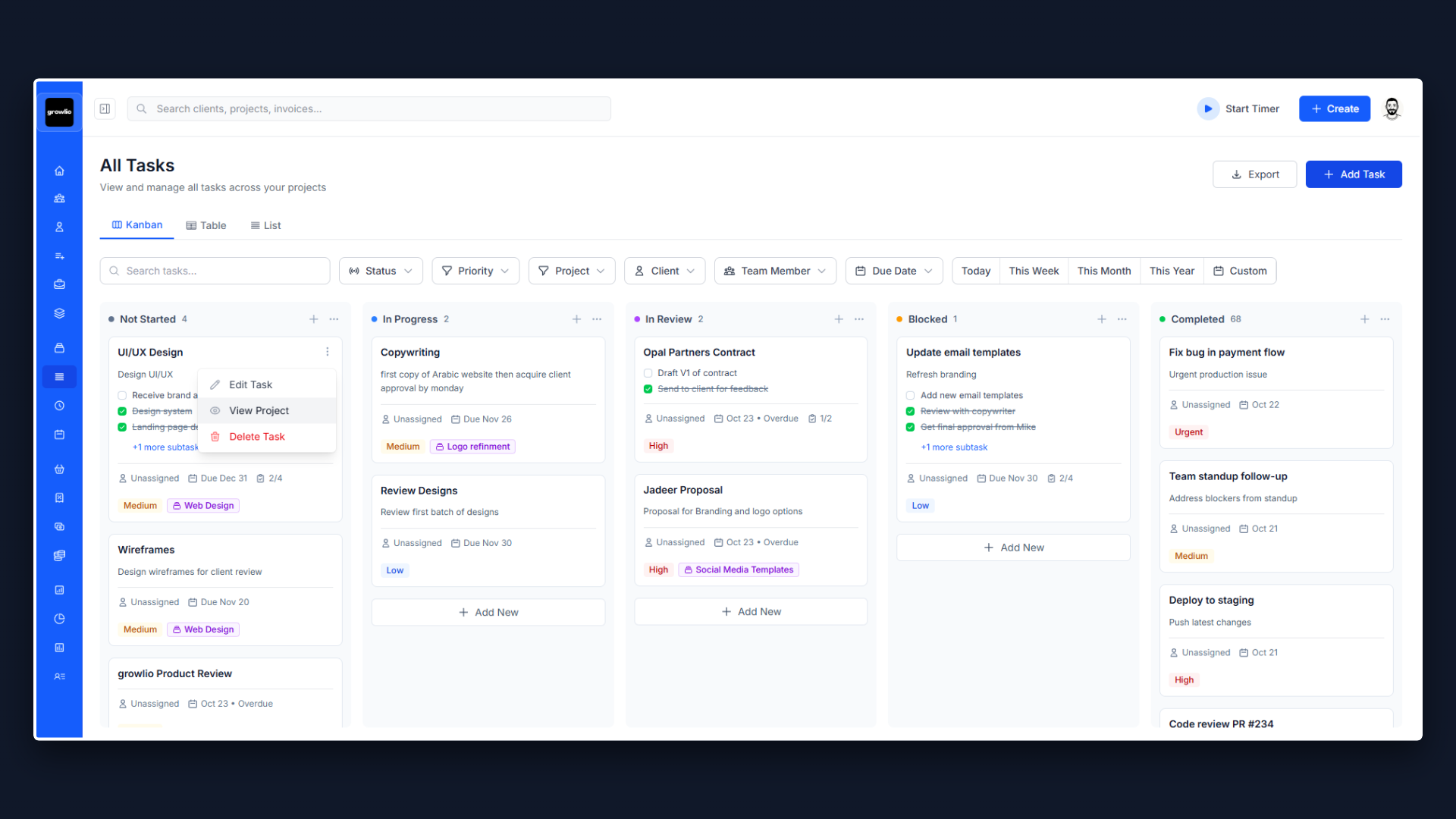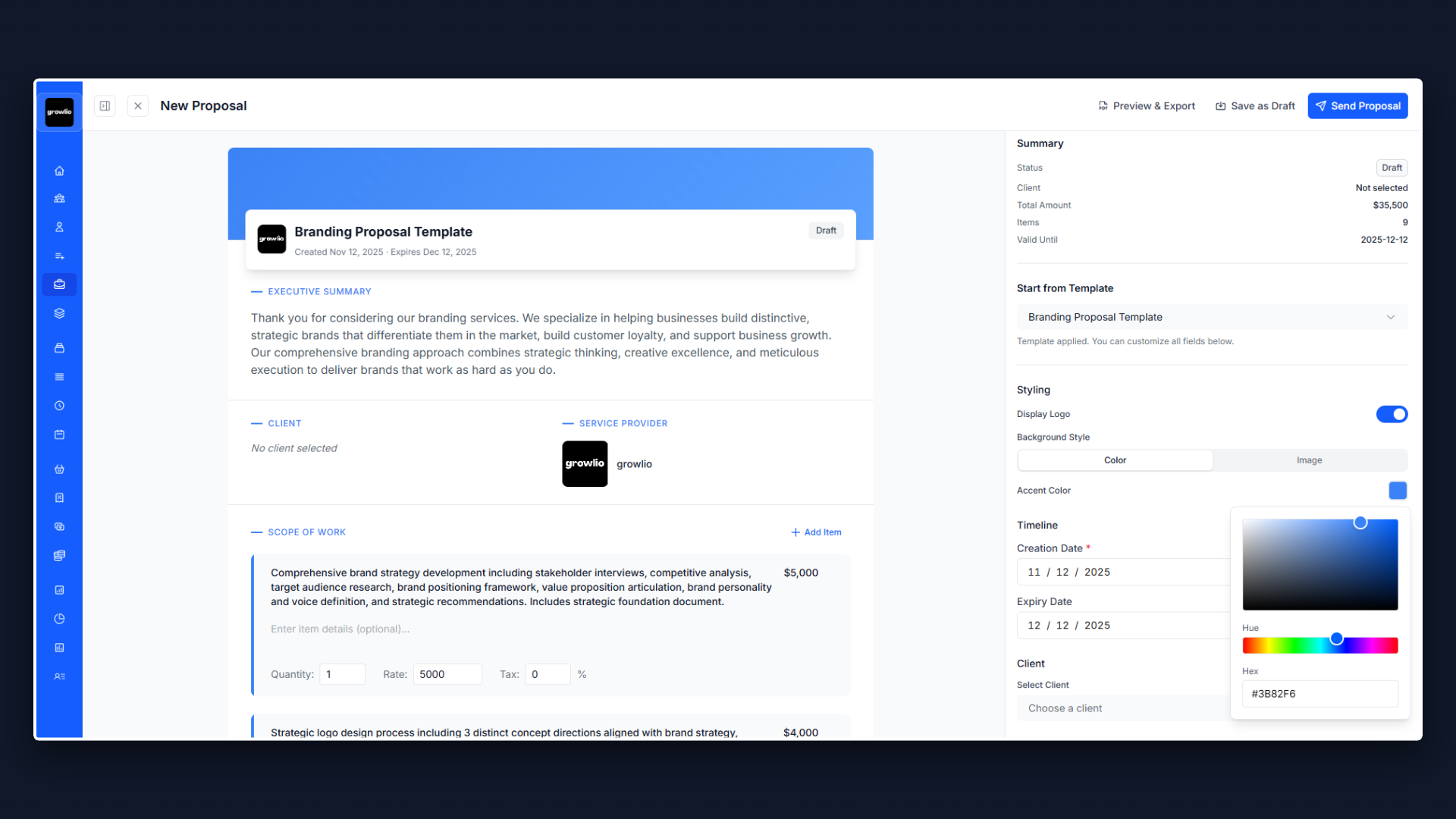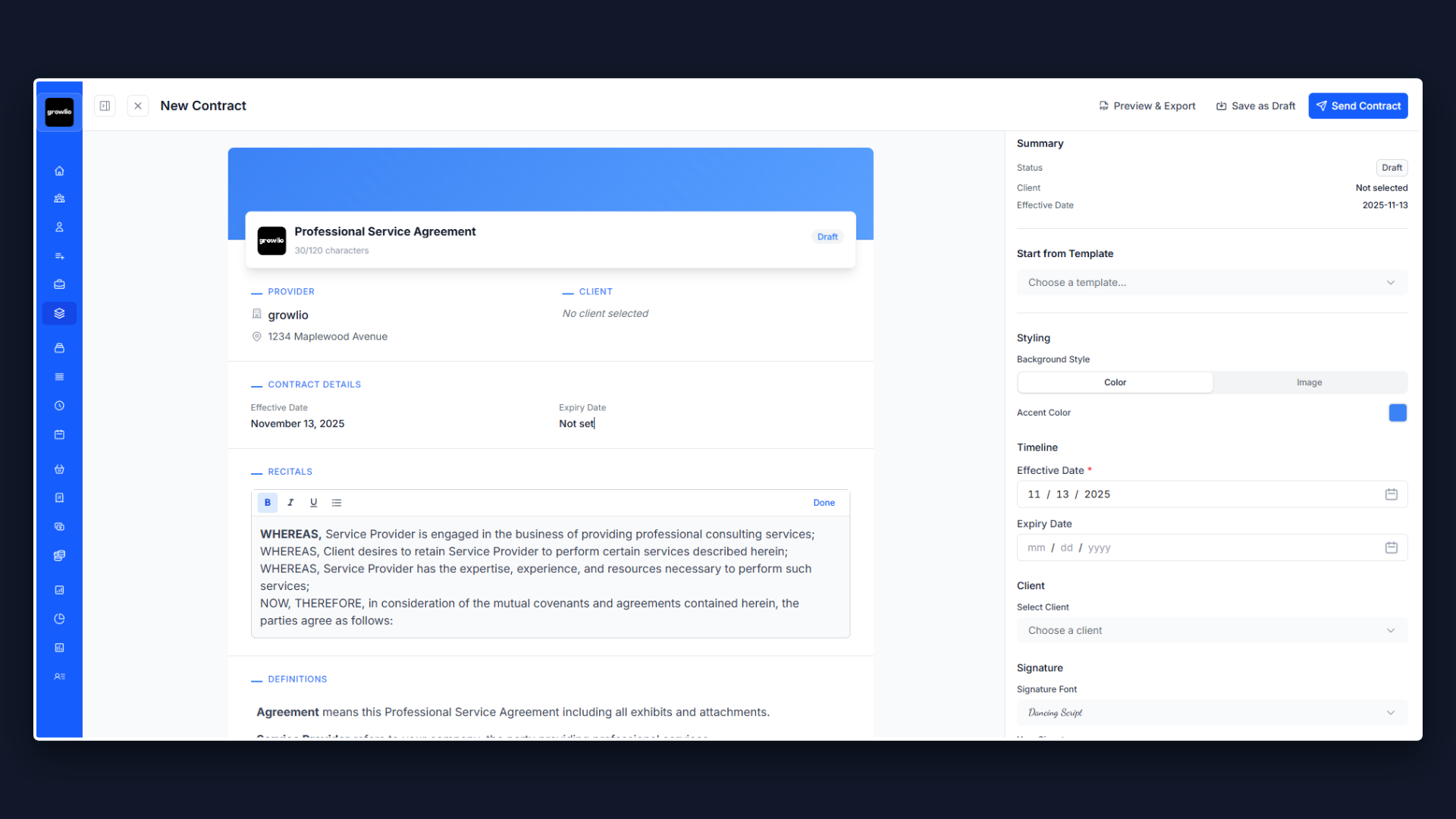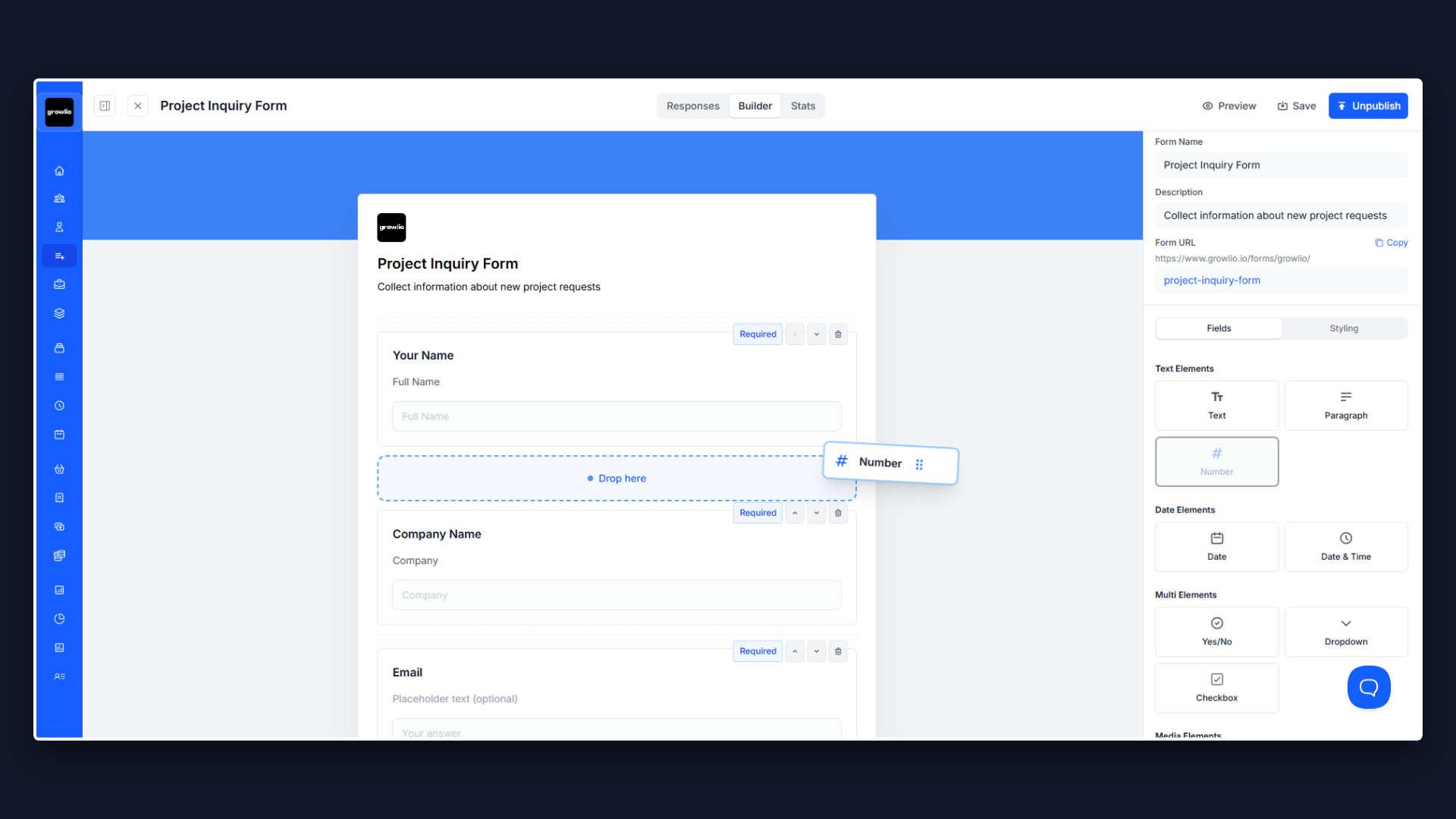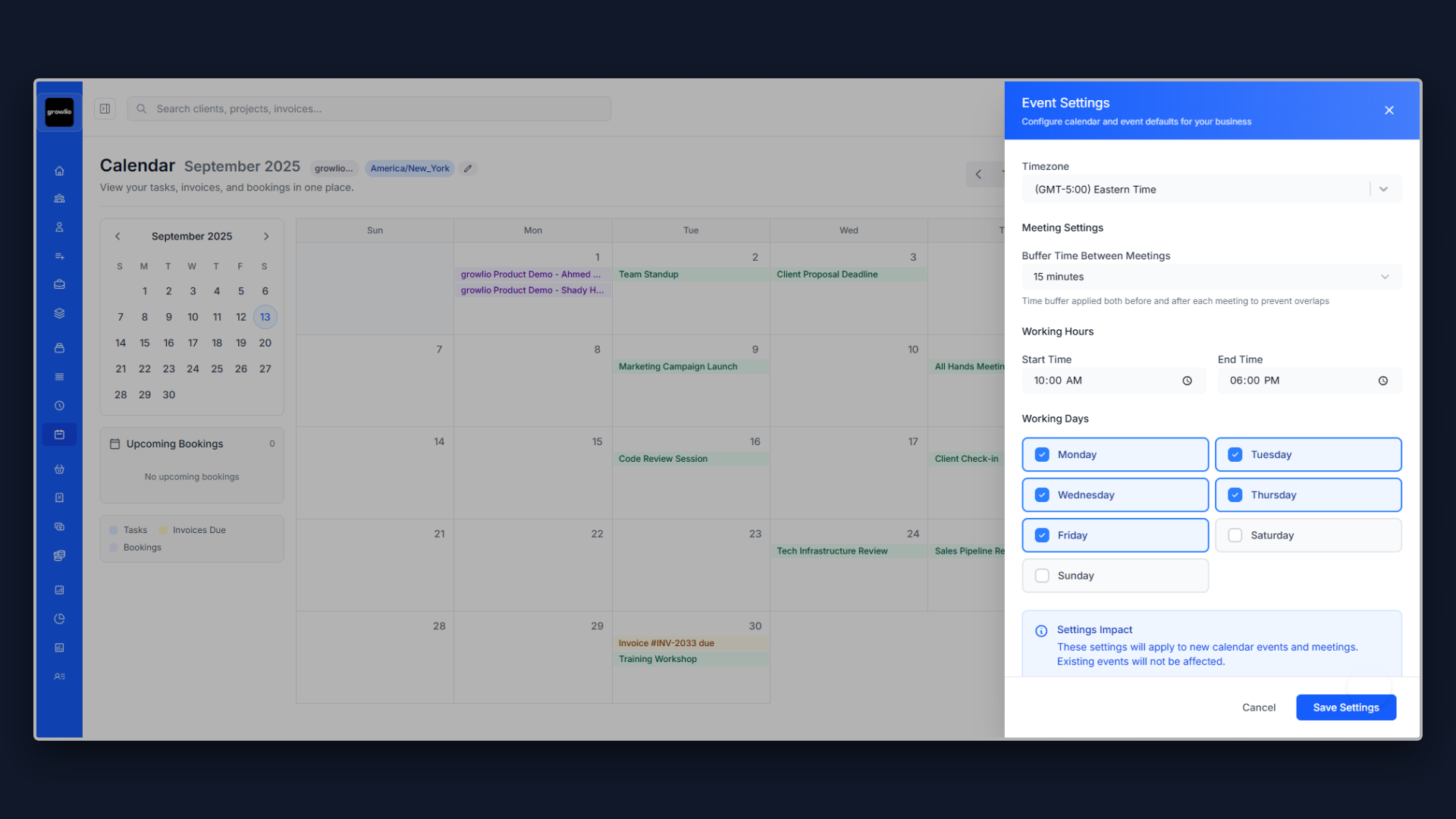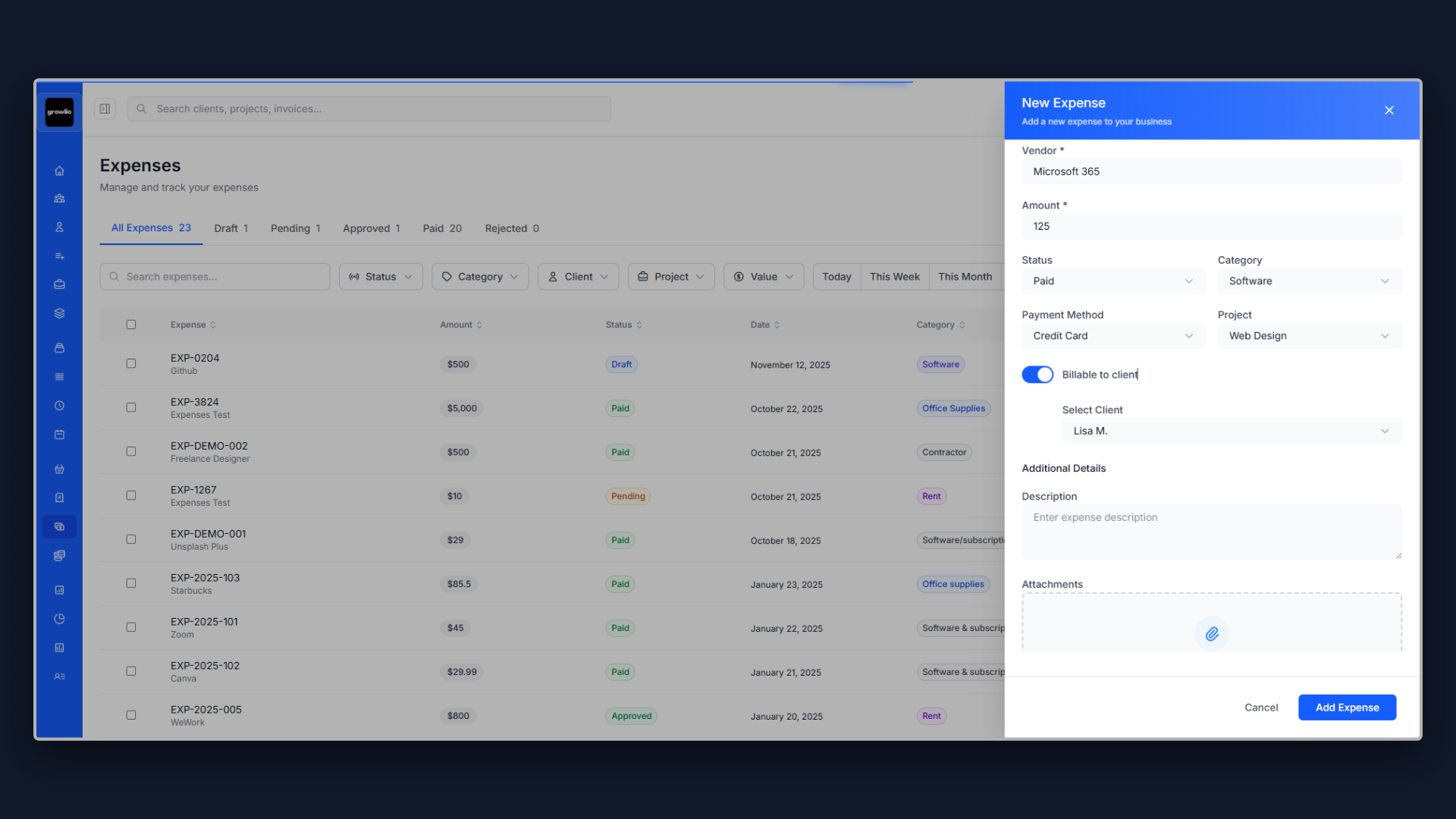Why Your Content Writing Proposal Makes or Breaks Your Business
As a content writer or content marketing agency, you know that businesses with blogs generate 67% more leads than those without, and content marketing costs 62% less than traditional marketing while generating 3x as many leads. But here's the harsh reality: even if you're an exceptional writer who creates engaging, conversion-focused content, you'll struggle to win clients if your proposals don't demonstrate your value clearly.
The content marketing industry generates over $42 billion annually, with 82% of marketers actively using content marketing and 70% investing more in it year over year. Yet many talented content writers lose projects to competitors who simply write better proposals. This has nothing to do with your writing skills and everything to do with how you present them.
Your content writing proposal is your first impression, your sales pitch, and your contract all rolled into one document. It needs to educate prospects who may not understand SEO content strategy while simultaneously proving you're the expert they need. This is a delicate balance that many get wrong.
1. Start With the Client's Current Content Situation, Not Your Services
The biggest mistake content writers make is leading with a list of services: "We offer blog writing, website copy, case studies..." Your prospect doesn't care about your services yet. They care about their problems.
Start your proposal by demonstrating you understand their specific content situation. Are they posting inconsistently or not at all? Is their existing content thin and unoptimized? Are they getting traffic but no conversions? Do they lack content targeting their buyer's journey? Are competitors outranking them with better content? Address these pain points explicitly.
For example: "Our analysis shows your website has only 8 blog posts published in the past year, with an average length of 450 words. Meanwhile, your top 3 competitors are publishing 2-4 in-depth articles per week averaging 1,800+ words. This content gap means you're missing out on organic search opportunities—our keyword research shows 150+ relevant keywords in your industry where quality content could help you rank and capture leads. Based on typical conversion rates, a strategic content program could generate 40-80 additional qualified leads per month."
This approach immediately shows you've done your homework and understand what's at stake. Now they're ready to hear your solution.
2. Include a Content Audit to Demonstrate Your Expertise
Nothing builds credibility faster than showing you've already analyzed their content. Include a brief audit section in your proposal highlighting 3-5 critical issues you discovered:
Content Gaps: Only 8 blog posts in the past year (competitors publishing 8-16 per month), no pillar content or comprehensive guides, missing key content types (case studies, comparison pages, FAQ resources), no content targeting bottom-of-funnel buyers ready to purchase.
SEO Optimization Issues: Existing content averages only 450 words (top-ranking content averages 1,800-2,500 words), missing target keywords in titles and headers, thin content that doesn't fully answer search queries, no internal linking strategy connecting related content.
Content Quality Problems: Generic content that could apply to any company in your industry, no unique insights or expertise demonstrated, missing data, examples, and specific details that build credibility, weak or missing calls-to-action that don't guide readers to next steps.
Strategic Weaknesses: No clear content strategy or editorial calendar, content doesn't align with buyer personas or customer journey stages, no content repurposing or distribution strategy, missing opportunities to address common customer questions and objections.
This mini audit serves multiple purposes: it proves you know what you're doing, it creates urgency by highlighting problems, and it makes your proposed solutions feel essential rather than optional.
3. Break Down Your Content Strategy Into Clear Phases
Content marketing is multifaceted, but your proposal shouldn't be confusing. Break your strategy into clear, logical phases that clients can understand.
Phase 1: Strategy & Foundation (Week 1-2)
Content audit of existing materials, competitor content analysis and benchmarking, buyer persona development and customer journey mapping, keyword research and topic cluster planning, content strategy document and editorial guidelines, brand voice and tone development.
Phase 2: Pillar Content Development (Week 2-4)
Creation of 3-5 comprehensive pillar pages (2,500-4,000 words each), in-depth topic coverage establishing authority, SEO optimization for competitive keywords, strategic internal linking architecture, conversion-focused calls-to-action and lead magnets.
Phase 3: Ongoing Content Production (Week 4 and ongoing)
Weekly or bi-weekly blog posts (1,500-2,000 words), supporting content for topic clusters, SEO optimization for all content, content calendar management, performance tracking and optimization, seasonal and trending topic coverage.
Phase 4: Content Expansion & Optimization (Month 3+)
Additional content types (case studies, whitepapers, guides), content refreshing and updating of older posts, conversion rate optimization for high-traffic pages, content repurposing for other channels, advanced content marketing tactics (content partnerships, expert roundups).
This phased approach makes content marketing feel manageable and shows you have a clear roadmap. It also allows you to break pricing into phases if needed, making the investment feel less overwhelming.
4. Set Realistic Expectations About Results and Timeline
One of the fastest ways to lose trust is overpromising results. Clients appreciate honesty about content marketing timelines, even if it means waiting longer for viral traffic.
Be explicit: "Content marketing is a long-term strategy that builds momentum over time. Most businesses start seeing traffic improvements within 2-3 months as new content gets indexed and starts ranking. Significant results—including leads and conversions—typically become measurable within 4-6 months. The full impact of a content program usually manifests within 6-12 months."
Provide a realistic projection: "Based on your industry and current website authority, we project: Month 1-3: 15-25 new SEO-optimized content pieces published, 30-50% increase in indexed pages, improved rankings for long-tail keywords. Month 4-6: 50-100% increase in organic traffic, 20-40 qualified leads per month from content, 3-5 articles ranking on page 1 for target keywords. Month 7-12: 100-200% increase in organic traffic, 60-100 leads per month, established authority in your niche with top rankings for competitive terms."
These numbers may seem conservative, but they're believable. Once you exceed these expectations, your client will be thrilled. If you promise page 1 rankings and 1,000 leads in 30 days and fail to deliver, you'll lose the client.
5. Explain Your Content Research and Writing Process
Many clients don't understand what separates exceptional content from mediocre blog posts. Use your proposal to educate them on your approach.
Explain that effective content writing involves: comprehensive topic research including competitor analysis and SERP review, interviewing subject matter experts or client stakeholders, incorporating data, statistics, and credible sources, structuring content for scannability (headers, bullet points, short paragraphs), writing for humans first, search engines second—natural, engaging prose, including original insights and expertise that can't be found elsewhere, and optimizing for SEO without sacrificing readability or value.
Outline your writing process: "Every piece of content goes through: Keyword and topic research (understanding search intent and user needs), comprehensive outline creation (ensuring logical flow and complete coverage), first draft writing with focus on value and clarity, fact-checking and source verification, SEO optimization (keywords, headers, meta descriptions, internal links), editing for grammar, clarity, and brand voice, client review and revision rounds, and final publication with strategic promotion."
Give specific examples: "Instead of writing a generic 'Top 10 Marketing Tips' post, we'll create in-depth content like 'The Complete Guide to B2B Content Marketing for SaaS Companies: 15 Strategies That Generated 500+ Leads' (2,500 words) with specific data, case examples, actionable steps, and downloadable templates. This depth and specificity is what ranks and converts."
This demonstrates your strategic, thorough approach and sets you apart from commodity content mills.
6. Address SEO Content Writing Specifically
Many businesses understand they need "SEO content" but don't know what that really means. Educate your prospect on your SEO content approach.
Explain the balance: "SEO content writing isn't about keyword stuffing or writing for robots. It's about creating genuinely valuable content that answers searcher questions while strategically incorporating keywords Google uses to understand and rank your content."
Outline your SEO optimization: "Every piece of content includes: primary keyword research and selection, natural keyword integration in title, headers, and throughout content, secondary and related keyword targeting, strategic internal linking to related content, optimized meta titles and descriptions, header tag hierarchy (H1, H2, H3) for structure, image optimization with descriptive alt text, and schema markup when applicable for rich results."
Set expectations about SEO results: "New content typically takes 3-6 months to reach its full ranking potential as Google indexes it, evaluates quality, and builds authority. However, we often see long-tail keywords ranking within 4-8 weeks. We track rankings monthly and update content as needed to maintain and improve positions."
Emphasize quality over tricks: "We never use black-hat SEO tactics like keyword stuffing, cloaking, or duplicate content. Every piece is original, valuable, and compliant with Google's quality guidelines. This approach delivers sustainable, long-term results without risk of penalties."
7. Explain Your Editorial Calendar and Planning Process
Clients often struggle with content consistency. Show them how you'll solve this problem.
Explain the importance: "Consistency is critical for content marketing success. Search engines favor websites that publish regularly, and audiences come to expect and rely on your content. An editorial calendar ensures strategic planning and consistent execution."
Outline your calendar approach: "We create rolling 90-day editorial calendars showing: specific topics and target keywords for each piece, content type (blog post, guide, case study, etc.), target buyer persona and customer journey stage, target publish date and assignments, promotional and distribution plan, and seasonal or trending topics to capitalize on timely opportunities."
Address flexibility: "While we plan ahead, we also remain flexible for timely topics, industry news, or emerging opportunities. The calendar is a guide that ensures consistency while allowing for strategic pivots when needed."
Provide collaboration details: "You'll have access to the editorial calendar and can provide input on topics, review upcoming content, and suggest additions. We'll have monthly planning sessions to align on priorities and ensure content supports your business goals."
8. Address Different Content Types and Formats
Content marketing extends beyond blog posts. Show prospects the range of content you can create.
Outline content types you offer: "We create comprehensive content across formats: Blog Posts (1,500-2,500 words, published weekly or bi-weekly), Pillar Pages and Ultimate Guides (3,000-5,000 words, comprehensive topic coverage), Case Studies (1,000-1,500 words, showcasing client results and ROI), Whitepapers and Ebooks (3,000-10,000 words, in-depth research and insights), Website Copy (homepage, service pages, about page, product descriptions), Landing Pages (conversion-focused copy for campaigns), Email Content (newsletters, nurture sequences, promotional emails), and Social Media Content (adapting long-form content for social distribution)."
Explain strategic use: "Different content types serve different purposes in your marketing funnel. Blog posts attract traffic and build authority. Ultimate guides capture email addresses through gated downloads. Case studies convince prospects in the consideration stage. We strategically deploy content types based on your goals and buyer journey."
Provide content mix recommendations: "For most B2B businesses, we recommend: 60-70% blog posts and educational content, 20-25% pillar content and comprehensive guides, 10-15% bottom-funnel content (case studies, comparison pages, landing pages). This mix drives traffic while also converting visitors into leads and customers."
9. Explain Your Quality Standards and Expertise
Content quality varies wildly in the market. Differentiate yourself by explaining your standards.
Outline your quality commitments: "Every piece of content we create meets strict quality standards: 100% original content written by experienced writers (never AI-generated filler or spun content), thoroughly researched with credible sources cited, fact-checked for accuracy and credibility, edited by professional editors for grammar and clarity, reviewed for brand voice and messaging consistency, and optimized for readability (appropriate reading level for your audience)."
Address expertise: "We assign writers with relevant experience in your industry. If writing about SaaS marketing, you'll work with writers who understand SaaS. If writing about healthcare compliance, you'll get writers familiar with HIPAA and regulatory requirements. Expertise matters—it shows in the content quality and positions you as an authority."
Explain revision policy: "We include 2 rounds of revisions per piece to ensure your complete satisfaction. Our goal is content you're proud to publish, that accurately represents your brand, and that delivers results."
This emphasis on quality justifies your pricing and sets expectations above commodity content services.
10. Include Writing Samples and Proof of Results
Nothing sells like evidence. Include 2-3 relevant writing samples and case studies in your proposal.
Format case studies simply: Client: B2B marketing software company. Challenge: Low organic traffic, no content strategy, losing leads to competitors with better content. Strategy: Developed content strategy targeting buyer personas, published 2 in-depth articles per week, created pillar content for core topics, optimized existing pages. Results: Organic traffic increased 285% in 8 months, 12 articles ranking on page 1 for target keywords, content-generated leads increased from 15 to 95 per month, reduced cost-per-lead by 60%.
Include writing samples: "Attached are 3 writing samples demonstrating our work: Example 1: 2,500-word comprehensive guide on [relevant topic], Example 2: 1,800-word blog post with data and actionable tips, Example 3: Case study showcasing client results. These samples demonstrate our research depth, writing style, and SEO optimization approach."
If you're new to content writing and don't have extensive client work yet, you can reference: your own blog or published articles, guest posts on industry publications, personal projects or niche websites you've written for, or writing from any internships or previous employment.
Even 2-3 strong samples are better than none. They give prospects confidence in your abilities.
11. Transparent Pricing That Reflects Value
Pricing content services can be challenging since scope varies widely. However, vague pricing makes clients nervous.
Provide clear pricing tiers or packages: Starter Content Package - $2,000/month: 4 SEO-optimized blog posts per month (1,500 words each), keyword research and topic planning, basic SEO optimization, monthly content calendar. Growth Content Package - $3,500/month: Everything in Starter, plus 6-8 blog posts per month (1,500-2,000 words each), 1 pillar page or ultimate guide per quarter, advanced SEO optimization and internal linking, content strategy and quarterly planning sessions. Premium Content Package - $6,000/month: Everything in Growth, plus 10-12 blog posts per month, 2 case studies or whitepapers per month, dedicated content strategist, comprehensive content marketing (including social promotion), conversion rate optimization, competitor content analysis.
This tiered approach gives clients options and helps them see the value at each level. It also makes upselling easier as they see results.
12. Make Next Steps Crystal Clear
Don't leave your prospect wondering what happens next. End your proposal with a clear call to action and process.
"Ready to build a content marketing program that drives consistent, qualified leads? Here's how we get started: Step 1: Sign the proposal and return it by [date]. Step 2: We'll schedule a kickoff call within 48 hours to discuss your brand, audience, and goals. Step 3: Our team begins content audit and strategy development immediately. Step 4: First content pieces published within 2-3 weeks, with consistent weekly publishing thereafter. Questions? Schedule a call with me at [calendar link] or reply to this email."
This removes friction and makes it easy for prospects to say yes. The clearer you make the path forward, the more likely they are to take it.
Final Thoughts on Content Writing Proposals
Your content writing proposal isn't just a formality—it's a sales tool, an educational resource, and a trust-building document. The content writers who win the most clients aren't always the most talented wordsmiths; they're the ones who best explain content strategy in a way that makes sense to business owners.
Take the time to customize each proposal for your prospect. Reference their specific website, content gaps, and competitors. Show that you've done the research. Demonstrate your expertise through a content audit and strong writing samples. Set realistic expectations about traffic and lead growth. And make it easy to say yes.
Remember: a great content writing proposal proves you understand their business and audience, demonstrates you have a clear content strategy, shows evidence you can deliver quality and results, and makes the investment feel worthwhile. Get these elements right, and you'll close more deals—even if your competitors have lower rates or bigger portfolios.
